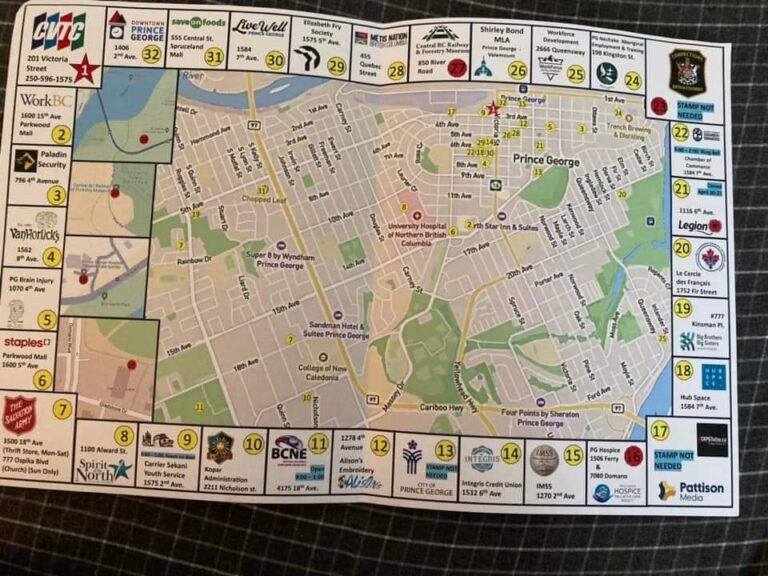If you ask anyone about their financial concerns right now, for the most part you will hear a litany of rising food costs and rising gasoline costs, with rising rent and housing nipping at their heels. And it’s extremely easy to blame the government for those problems (and to some extent, they share the blame). But this is happening worldwide, so unless you think that Canadian government is so strong as to impact prices in Japan, there is clearly more going on than governmental inadequacies.
When it comes to inflation, food prices often wield the most immediate axe to our budget, with gas prices not far behind. But what’s going on behind the grocery store labels?
While we wouldn’t be so arrogant as to tell you how best to spend your money, we do hope to shed some light on what’s going on. Knowledge is power!
Sticker Shock at the Grocery Store
I swear that I can see the grocery prices rise before my very eyes when I go shopping. It’s horrifying. And aggravating and makes me really feel like the grocery stores are somehow out to get me. Mind, they are all doing it, including the local ones, so it can’t just be Big Business. (It’s more fun to curse them out though).
Ok, so what is going on?
The issue(s) here is that the sticker shock at the grocery store is tied to several things, almost none of which is under our control, hence the frustration with being told to just spend less. (If I spend any less, we are going to be skipping meals, ok? And no one messes with my coffee). So here are the Big Reasons Why Your Food Is Expensive:
A Complete Tangled Up Supply Chain

Back at the start of the pandemic, there were several things that happened that still have an impact today. First of all, many, many dock workers went out sick, causing a massive labor shortage for loading and unloading goods. Contrary to what many may believe, this is actually a skilled labor job, and you cannot simply pull people off the street to do it. Manufacturers also faced a labor shortage as people got sick and then the borders shut down, bottlenecking goods in different countries.
But those goods still had to go somewhere and so we have mountains of goods lying in docks, ports, and warehouses, but no one to do anything with them!
So, two years later, we have piles of things everywhere, but many of those skilled labourers have gone off to work somewhere else, retired (many of the labourers were about to retire when Covid hit anyway), or have come back to work, but now have more stuff to do than time to do it. On top of that, the fact that people couldn’t travel, spend wads of cash, and got stimulus checks sitting cozy in their bank accounts meant an explosion of spending once they were even slightly let off the leash. This, by the way, is one of the big reasons why real estate shot up in Canada in 2020 and 2021, contrary to what many realtors thought would happen: people were sitting on trillions in savings, had extremely low interest rates, and wanted more space, so many people went on a house buying binge.
Two years after the pandemic was officially announced, there are still nasty snarls in the supply chain, driving up the costs as companies have to invest more in training and retaining workers and deal with a labor shortage.
Rising Gas Prices
Obviously, we can’t overlook the price of fuel at the pumps.
So, my husband works as an archaeologist and routinely has vehicles rented for him so he can get to and from the site. These are usually nice vehicles (I mean, they’re rentals) and newer ones. The last run he did, he had a pretty nice truck which cost the company $200 to get from nearly empty to three quarters of a tank.
Woof.
Now push that a step further to delivery trucks, big rigs, and even tractors and trailers being pulled by trucks. Where once filling the tank may have cost a few hundred dollars, now it may cost several hundred dollars. Those costs have to get made up somewhere and they usually get made up by the stores.
In northern BC, gas is at $2.03/liter (more in the lower mainland).
“It’s the fault of the government and the carbon tax!”
Let’s break this down, shall we:
The carbon tax is .11 (or eleven cents) per liter. Which, ok, sucks, but doesn’t account for the fact that gas has shot up about ten cents in the last month. The carbon tax doesn’t really move (or when it does, it does so annually), so laying all the gas price woes at its feet isn’t really logical. Furthermore, we can do a comparison: in Edmonton, the highest gas prices are 1.77/liter (Alberta doesn’t have a carbon tax); in Prince George, it’s 2.03/liter. If the carbon tax was all that was the difference, our gas prices should be 1.88. They most assuredly are not!
What is actually causing the prices (aside from the carbon tax which yes, makes a difference, obviously):
- The war between Russia and Ukraine. With sanctions on Russian oil, the prices jumped up. Necessary to try to strangle Putin’s war, but hard on the pumps. This is actually the main reason why we are seeing a gas price spike – prior to the war, we imported $550 million dollars of crude oil per year from Russia, much of it used in Eastern Canada, but there is still a ripple effect. Globally, Russia accounts for 10% of the world’s daily crude oil supply.
- Those supply issues again. Fuel has to get transported and the price to transport the fuel is high so the cost gets passed on and round and round we go
- A small impact from people going from not driving at all (low demand) to going back to travel like usual (high demand)
So we take a hit at the pumps which includes grocery stores taking the hit and contributing to rising food prices.
War
The impact that the war between Russia and Ukraine has on the world cannot be understated. The two countries account for a staggering 25% of the world’s wheat supplies and now those supplies are under threat (and have already been damaged in Ukraine). Combine this with poor growing seasons due to extreme heat and there is a shortage in crops which causes prices to go up. Wheat prices have gone up already which impacts the price of bread, flour, and more. Combine this with rising fuel costs and shipping problems and you can see why food prices are rising.
So What Can Be Done About It?
The first thing to keep in mind is that while we can lay a lot of blame for a lot of things on the feet of government, this one may be too big to blame them for. This is a global issue; prices are rising everywhere. And while some people would claim that this is part of a New World Order, you would then have to say that global governments are a lot more organized than we give them credit for. (You cannot have your cake and eat it too! And with rising flour prices, that might not just be a metaphor…)
Let’s assume for a moment that this issue is really complex and really big and not going to be fixed by electing in a new government (humor me). What can we do on the ground while we wait for the next election to be called?
- Shop local. Ok, shopping local is often seen as pricey, but nowadays, not so much. You see, your local farmers, growers, and makers don’t have to pay nearly as much as transportation costs as the bigger grocery stores do. Their costs mainly come out in feed and land, which is pricey too, but at least they don’t have cross-country shipping on top of it. Furthermore, the food you get from the local farmer’s market is going to be fresh, likely organic, cost about the same as you would pay in the store, and you get to support local farmers which feels nice. Obviously you won’t be able to buy everything there, but any little bit helps.
- Co-op shopping. Have friends or family members you can shop with? Pool your resources, go for a big haul, and then divide it up. This also saves on gas since presumably only one or two people will be doing the pick-up.
- Understand the psychology of grocery store layouts. I won’t get into it here because The Food Theorists does an amazing job of breaking it down, but it’s important to understand that grocery stores are set up to trick you into buying as much as possible, often impulse buys, in order to get you to spend more. By doing things like going in with a clear list, going in full, and avoiding the use of shopping carts unless you need it, you can save money. Weird eh? Watch the video when you’re done here: it’s amazing. (though the grocery money is out of date now… even though it’s only 2 years old… depressing).
- It’s not always possible to grow a garden, so we won’t insult you with it, but growing a few herbs is easy to do in a small pot and can save you on fresh herbs. I have a nearly black thumb, so I recommend something simply like thyme. Even I can grow thyme.
We all need to eat, and I won’t insult my reader’s intelligence by telling you how to shop for groceries. (It’s hard enough out there without being told that you shouldn’t be buying ice cream because how dare you). But it is important to know what’s going on behind the scenes so that you can put your energy towards useful things instead of railing on Facebook.
How are you dealing with rising food prices?

